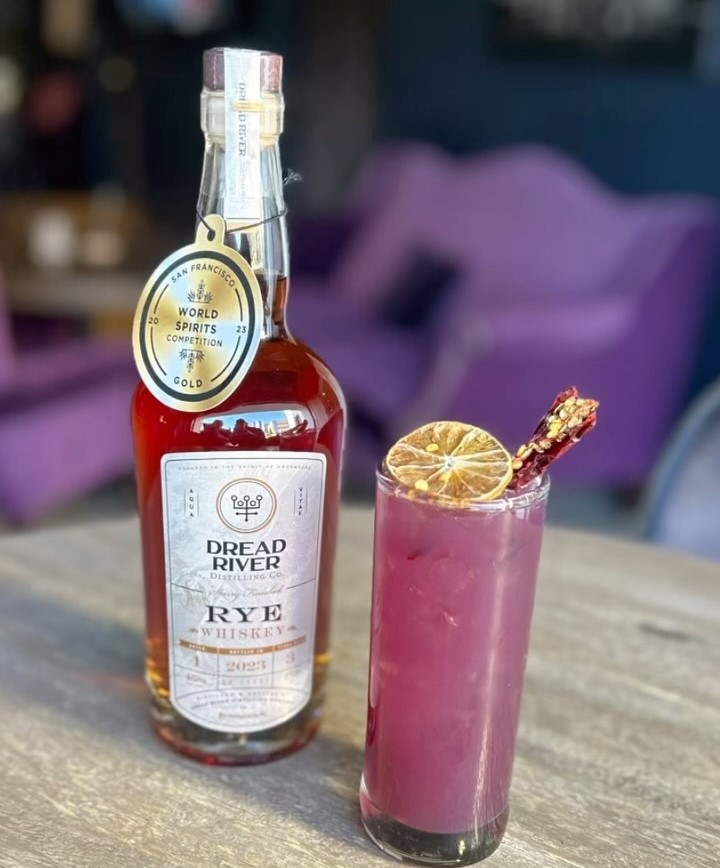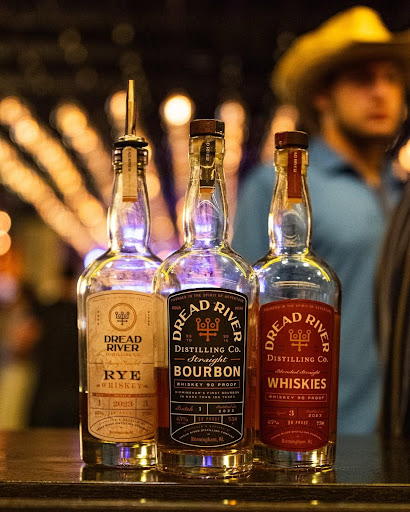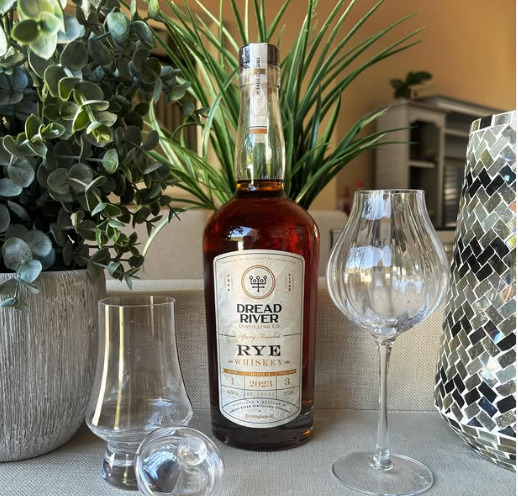How to Build the Perfect Home Whiskey Collection
March 28, 2025
Dread River

Whiskey has always stood as a token of sophistication, tradition, and artistry. Building a home whiskey collection has become more prevalent. Several factors drive these collections including global demand, supply, personal favorites, and broad varieties. A well-curated whiskey selection acts as a doorway to global distillation history.
Whether you are an older whiskey aficionado or a rising novice, knowing the nuances of selecting, keeping, and serving whiskey distinguishes a good, long-lived collection. And this blog will give all the details about how to build the perfect whiskey collection.
Whiskey for Collectors: Understanding A Timeless Treasure
Geographical source, distillation technique, and grain composition make the whiskey distinctive. Every style of whiskey has natural qualities shaped by centuries of experimentation and modern advancements. An excellent collection will celebrate this variability by providing an extensive range of flavors and formats.
The geographical location where a whiskey is produced plays a fundamental role in shaping its profile. Climate fluctuations affect aging, whereas local water supply and choice of grain add particular elements to the final spirit.
- American Whiskey: Rye-forward with robust spice or aged rich caramel-laden bourbon in charred fresh oak barrels.
- Scottish Whisky (Scotch): From the peaty, smoky Islay malts to the floral and honeyed Highland ones, Scottish Whisky ranges.
- Irish Whiskey: Triple-distilled for exceptional smoothness, it boasts a subtle interplay of malt and grain notes.
- Japanese Whiskey: Inspired by Scottish customs but honed by precise work and creative barrel-aging methods.
The makeup of grain in whiskey—the mash bill—affects the texture and body of the spirit. Bourbons with high corn content provide sweetness, whereas a high rye mash bill generates a spicier taste. Aging in different styles of barrels from ex-bourbon casks to sherry casks and Mizunara oak helps to add complexity to the whiskey by including multiple levels of vanilla, spice, dried fruit, and tannins.
Selecting Your Core Bottles: The Essential Whiskey Types
A good collection needs to have a diverse selection of core bottles, each serving a distinct purpose in tasting and cocktail making.
A Bold Rye Whiskey to Add Complexity and Spice
Rye whiskey truly holds its own with its strong personality and all those deep, spicy flavors—it’s essentially a must-have whiskey for collectors. When you’re drinking a good rye, you usually get a lot of black pepper, nutmeg, and a little bit of caramel, all served up with a good oak foundation. And quite frankly, whether you’re drinking it straight, over ice, or blended into a traditional Manhattan, a quality rye whiskey just makes the entire tasting experience better.
A Peated and Unpeated Scotch for Depth
Scotch whisky’s diversity adds sophistication to any collection. Peated Islay styles add a smoky, oceanic strength, whereas unpeated Speyside and Highland whiskies add honeyed, floral, and dried fruit flavors. Having both types in a collection promises a dramatic diversity of tasting experiences.
A Rich Irish Whiskey for Smoothness
Irish whiskey, well-known for its rich, smooth, and creamy feel, brings along subtle hints of honey, fruit from the orchard, and that lovely toasted grain flavor. You can enjoy it in a traditional Irish Coffee, which is always a treat, or maybe you’re the type who prefers a top-notch single pot-still release. Either way, Irish whiskey really does a great job of connecting the worlds of bourbon and Scotch.
A Special or Limited Edition Bottle for Special Occasions
Small-batch and limited-release whiskeys build scarcity and intrigue for an assortment. Special release craft distilleries such as Dread River produce unique releases that feature cutting-edge aging practices and atypical cask finishes, which result in extremely popular additions for both collectors and enthusiasts.
A Smooth Bourbon for Classic American Flavor
Perfect for cocktails, a well-picked bourbon provides deep notes of vanilla, toasted oak, and caramelized sugar. ‘Old Fashioned’ or ‘Whiskey Sour’ beverages get a touch of complexity from aged bourbon with a balanced mash bill of corn, rye, and malted barley.
Expanding Your Collection: Specialty and Aged Whiskeys
Beyond core whiskey staples, a well-rounded collection benefits from the inclusion of specialized and aged expressions. These choices not only help to enrich the breadth of a collection but also serve as conversation pieces that add fresh levels to the tasting experience.

Cask Strength and Barrel-Proof Whiskey: Unfiltered Intensity
Bottled straight from the barrel without attenuation, cask strength or barrel-proof bourbon preserves its unrefined flavor. The alcohol by volume (ABV) is higher than this, sometimes surpassing 55-60% and offering a pure representation of the spirit’s complexity. Whiskey aficionados love these releases for their depth, viscosity, and abundant flavor concentration. Adding a small bit of water can open unknown complexities and moderate the heat.
Bottled-in-Bond Whiskey: A Mark of Quality
Bottled-in-bond whiskey upholds the U. S. standards for aging at least four years, produced by one distillery under one distiller, by one season’s production, and in a bottling at the specific 100 proof (50% ABV). This accreditation speaks to honesty, consistency, and transparency aspects treasured by experienced collectors while compiling their sets.
Single Barrel and Small-Batch Whiskey – Unique, Limited Releases
Single-barrel releases draw attention to the unfiltered nature of a single barrel, thus causing variations from bottle to bottle; unlike blended whiskeys, which combine multiple barrels for consistency. Even though they are blended, small-batch releases have fewer barrels, allowing for more control over the complexity and refinement of the finished product. Distilleries such as Dread River focus on small-batch whiskeys highlighting creativity and craftsmanship.
International Whiskeys: A Worldwide View
Broadening beyond domestic offerings, there are numerous global styles of whiskey for collectors who are curious enough to explore!
- Japanese Whiskey – Balancing and precise, frequently matured in uncommon Mizunara oak casks.
- Canadian Whiskey – Smooth by nature, occasionally with rye-dominant mash bills.
- European Whiskey – Increasingly popular, with creative aging methods, such as wine-cask finishes.
Storing Whiskey Properly: Protecting Your Investment
Bottle Positioning and Seal Integrity
Unlike wine, whiskey is typically stored upright to minimize cork contact. Excessive contact can degrade the cork, potentially affecting the whiskey’s flavor. Keeping the bottle tightly sealed also prevents oxidation, which can subtly alter the aroma and taste over time.
Temperature & Light Control
Consistent room temperature and limited exposure to light are essential for maintaining the quality of whiskey. Temperature changes may expand or contract the liquid and thereby compromise the seal of the bottle as well as induce oxidation. Sunlight directly influences chemical reactions within the whiskey, possibly decaying its character. Storage in the optimal temperature range of 59-65°F (15-18°C) with bottles stored in a shaded place.
Decanting Considerations – Function vs. Aesthetics
While decanters provide a classy display, they are not necessarily best for long-term storage. Decanters without a tight seal permit slow oxidation, which may reduce the depth of the whiskey over time. If a decanter is used, it is advisable to pour only the amount to be consumed immediately while storing the original bottle tightly sealed.

Dread River Distilling Co.: Redefining Craftsmanship in Whiskey Production
Nestled in the heart of Birmingham, Alabama, Dread River Distillery serves as a symbol of contemporary craftsmanship, creativity, and centuries-old distillation techniques. Meticulously prepared to represent both complexity and balance, we present a curated collection of liquors.
Offering premium bourbons, powerful rye whiskeys, and little-batch limited edition whiskey for collectors, our choices reflect mostly experienced aging practices and exact blending. Dread River guarantees every bottle tells a history of excellence and commitment with their cutting-edge distillery dedicated to top-quality spirit production. Come join us for a distillery tour or stop by anytime!